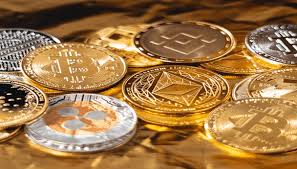In the function of a medium of circulation, material trading money is gradually being replaced by their signs and symbols. This process took a long historical epoch. Precious metals circulated for a long time in the form of ingots and were accepted in every transaction by weight.
Books on the history and theory of money note that at first the practice of hallmarking ingots developed, providing an appropriate guarantee of weight and fineness. Such ingots were already in circulation in Ancient Babylon in the 3rd-2nd millennium BC, in Egypt at the end of the 4th millennium BC. there were small ingots of gold of solid weight (about 14 g) with the mark of the pharaoh, and in the III millennium – gold rings of strictly defined shape and weight, although without a mark.
The expansion and development of trade leads to the appearance of coins, and in subsequent historical epochs, their substitutes in the form of paper money. The fleeting role of money in circulation makes such a substitution possible, and the erasure of the coin in the course of endless acts of purchase and sale creates the prerequisites for the practical realization of this possibility.
The appearance and distribution of the coin was a qualitative stage in the development of money as a means of circulation. The first gold coins began to be minted by order of the king of Lydia Gyges in the 7th century. BC. The name “coin” in relation to these standard pieces of precious metals appeared in 279 BC. in Rome as the title of the goddess Juno.
Before the advent of the coin, gold ingots, which served as money, had been in circulation for a long time in the form of standard geometric bodies of the same shape and weight, as evidenced by a special brand applied to them. This indicates a fairly widespread exchange already in distant historical times, about its transformation already in those days into regular trade, which dictated the need for the existence of a standard monetary equivalent. It was pennies that were actually minted and at that time were the largest coin [2].
Money as a measure of value has been in force since that time, and simple names of the corresponding ingots or coins are used as units of account. The ideal, symbolic form of money, in which it acts as a measure of value, is brought to the corresponding social symbol and, as a result.
receives a complete symbolic expression. Due to the almost complete identity of individual standard bars and coins, confirmed by the authority of state power, they become the most perfect counting tool for determining value. By adopting their names, monetary units also become an ideal means of account. This allows in the future to use money as a measure of value as counting, symbolic money without any difficulty.
The function of money as a means of storing value is also being improved due to the fact that it acquires counting characteristics not only in terms of weight, but also in the form of the names of standard bars and coins. Over time, both of these functions of money receive a monetary dimension, which allows money as a social category to act in a generalized form as a coin that embodies all aspects of the concept of value.
already being standard bars or coins, perform these functions, remain, of course, still fundamentally different. As a measure of value, they act perfectly, and here one name of the coins is enough. As a means of preserving value, they act bodily, physically, and here the coin must be available in all its full weight. Recall that commodity-money relations in the era of slavery, when coins appeared.
covered only a certain part of economic life, while most of the products were produced and consumed within the natural economy, without acquiring the form of a commodity and not entering the market for exchange. The main volume of trade, in which gold or silver money operated.
was provided by those who owned wealth and power. Gold at first generally participates mainly in international trade. At the same time, it is known that in those days quite significant sections of the free peasantry and urban artisans were participants in the extensive petty trade in items of daily necessity. Here, gold coins meant a fortune, were rare, often they were immediately hidden as a treasure and thus withdrawn from circulation.
To serve petty trade, next to gold coins, coins from cheaper metals appear and are used: copper, lead, tin. This metallic money acts as a bargaining chip for gold coins.
Gold bars and coins initially, as noted, performed the function of a medium of exchange together with the function of a store of value as part and development of this function. Actually, the very appearance of gold coins in economic terms means the development of the function of a store of value by its quantitative fragmentation. Before the advent of the coin, this crushing was carried out arbitrarily, by weight; with the advent of the coin
is carried out in equal standard parts due to the same weight of coins and is gradually used in counting terms.
In the form of a coin, all the functions of money that had been in operation by that time receive their integrated expression: it simultaneously serves as a unit of account by its name, as a store of value by its gold content, as a medium of exchange by its standard form and thanks to the presence of the two previous properties. It also performs the function of a means of payment due to the presence of the first two functions,





